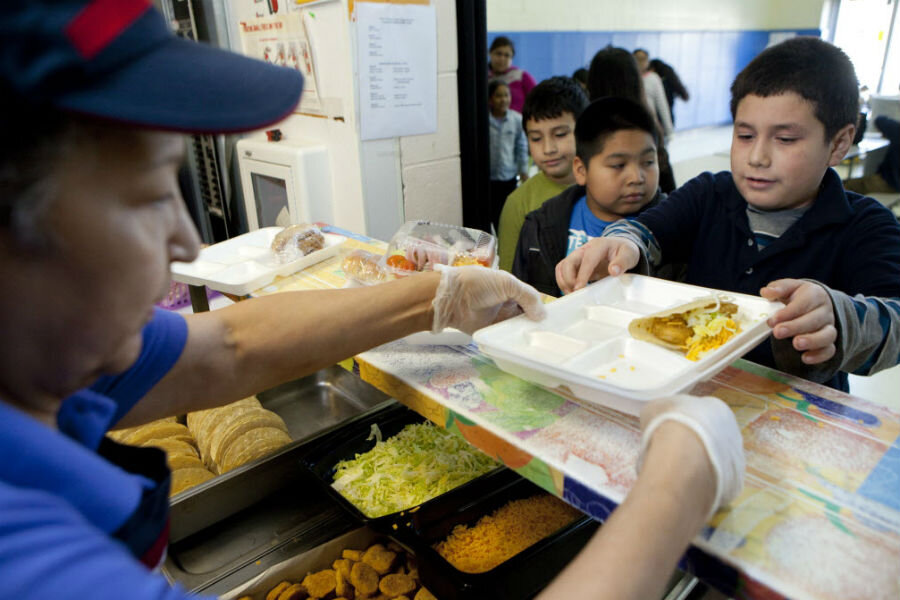Should schools feed students whose parents haven't paid for lunch?
Loading...
When faced with the choice between feeding a hungry child or following your boss's orders, which do you choose?
Stacy Koltiska, a cafeteria worker in the Canon-McMillan, Penn., school district, was faced with that very decision last week, when ordered not to give a hot lunch to a little boy with a negative balance on his lunch account. She ultimately followed orders, but quit her job shortly thereafter in protest of the school's policy.
"God is love, and we should love one another and be kind," Ms. Koltiska told The Washington Post. "There’s enough wealth in this world that no child should go hungry, especially in school. To me this is just wrong."
Koltiska is not the first cafeteria worker to be forced to choose between feeding a hungry student and following school policy. Last June, Della Curry, an elementary school kitchen manager at Dakota Valley Elementary School in Aurora, Colo., was fired for giving a crying first-grader a free lunch. A similar fate befell Dalene Bowden, a cafeteria worker in Pocatello, Idaho, in December, when she provided a 12-year-old with a hot tray despite the student's inability to pay for it.
"I know I screwed up, but what are you supposed to do when the kid tells you that they’re hungry and they don’t have any money?" Bowden told the Idaho State Journal at the time.
All three stories quickly spread around the news and social media, each time reigniting debate over how best to accommodate students who cannot afford to pay for a meal.
Policies on free lunches vary from school district to school district, and Koltiska's had instituted a new policy this fall. Students whose parents have not kept current with lunch payments are given a sandwich composed of two slices of wheat bread and one cold slice of "government cheese" instead of a hot meal, she told the Post. The hot lunch is then thrown away, and the parents charged the full price of $2.05 for the meal.
While Koltiska condemned the policy as "sinful and shameful," district superintendent Matthew Daniels told Action News 4 WTAE that the policy did was not aimed at targeting students who qualify for financial assistance.
Instead, he explained, the rule was meant to motivate parents to keep current on their child's lunch tab. Prior to the introduction of the policy, more than 300 families owed the district between $60,000 and $100,000 annually. Now, he said, only 70 families owe the district a total of $20,000.
"There has never been the intent with the adoption of this policy to shame or embarrass a child," Mr. Daniels said. But those opposed to such policies argue that, however unintentional, shame and embarrassment is typically the result of denying a hot lunch to a student who cannot pay.
Government-funded programs like The National Free Lunch Program offer free or reduced-cost lunches to millions of students across the country each year. But many students who qualify opt not to take advantage of such programs due to the stigma attached to receiving a free lunch, and many more who do not qualify for free or reduced price lunches still find it difficult to afford meals every day.
Though Canon-McMillan's new policy is not geared toward those students who qualify for free lunches, a number of the students in lunch account debt, who are affected most by the school's new policy, are likely from poor families who cannot afford to pay, Joe Zupancic, a Canon-McMillan school board member, acknowledged to the Post.
"We knew it would be a difficult situation," Mr. Zupancic said. "No one wants to single out kids, least of all a school district."






